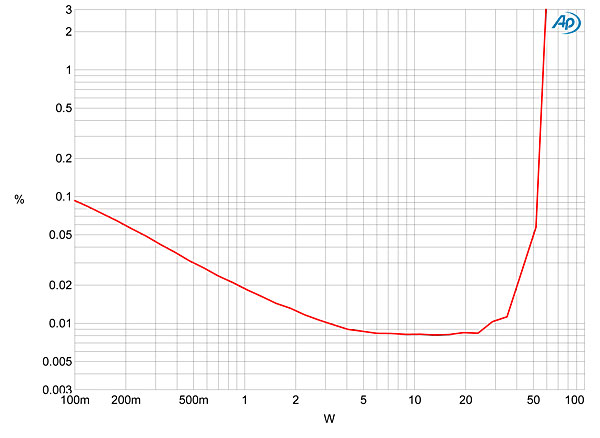The NAD review mentions a 1kHz test tone & continuous (RMS) power. Do we know what tone is used in the ASR measure, and if it is peak vs continuous (RMS) power?
I'm trying to compare RMS power into 8 ohm loads but I'm not sure how to interpret these two charts to compare what these two amps can do.
Loxjie A30:


 www.audiosciencereview.com
www.audiosciencereview.com
NAD D3020 V1:

Fig.13 NAD D 3020, distortion (%) vs 1kHz continuous output power into 8 ohms.
"The minimum distortion level was low, and the D 3020 clipped (defined as when the THD+N reaches 1%) at 58Wpc into 8 ohms (17.6dBW)"
I'm trying to compare RMS power into 8 ohm loads but I'm not sure how to interpret these two charts to compare what these two amps can do.
Loxjie A30:

Loxjie A30 Amplifier Review
This is a review and detailed measurements of the multifunction Loxjie A30 power (speaker and headphone) amplifier with integrated USB DAC and Bluetooth input. It was kindly sent to me by a member and costs US $159 plus $7 shipping on Amazon. The A30 sports a high resolution and high contrast...
 www.audiosciencereview.com
www.audiosciencereview.com
NAD D3020 V1:

Fig.13 NAD D 3020, distortion (%) vs 1kHz continuous output power into 8 ohms.
"The minimum distortion level was low, and the D 3020 clipped (defined as when the THD+N reaches 1%) at 58Wpc into 8 ohms (17.6dBW)"
Last edited:
